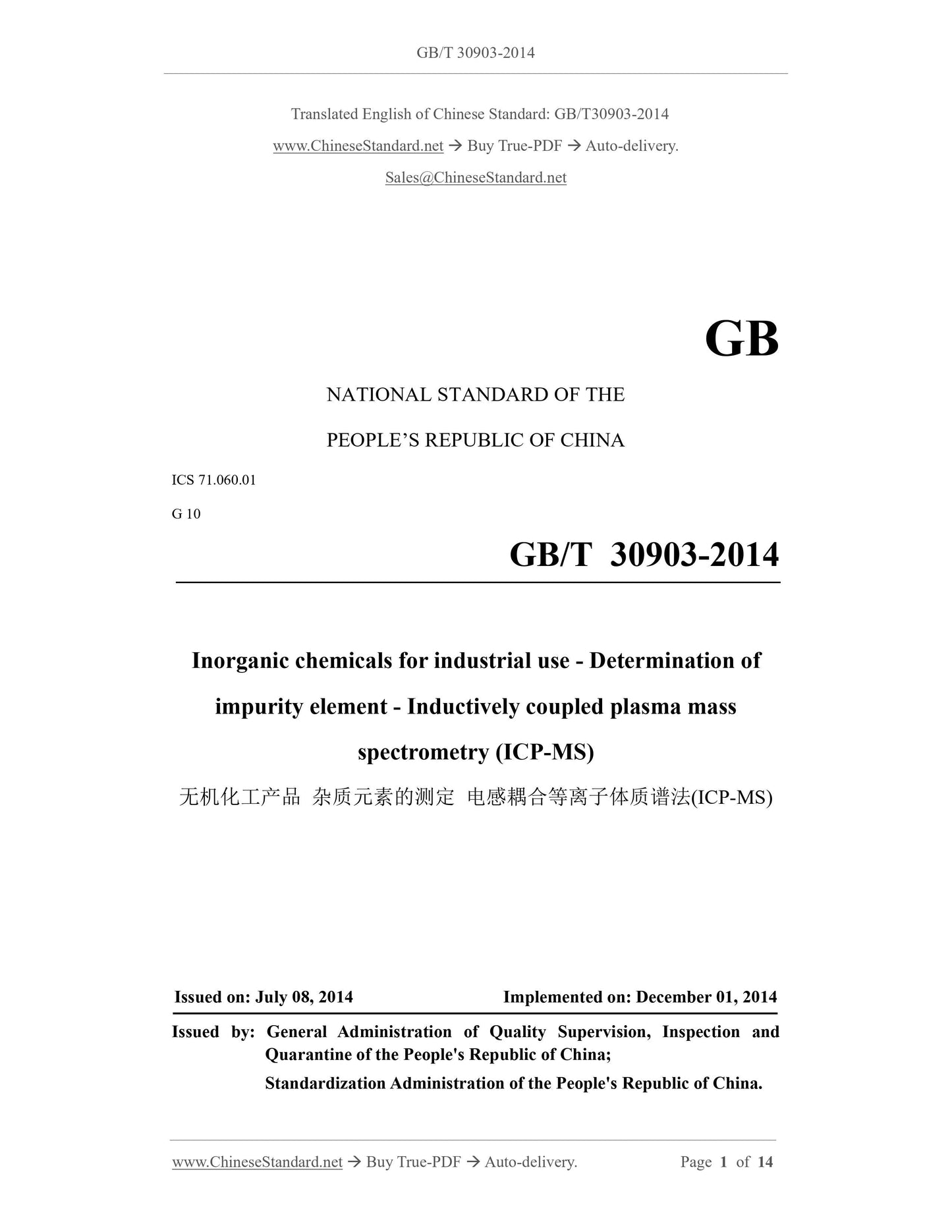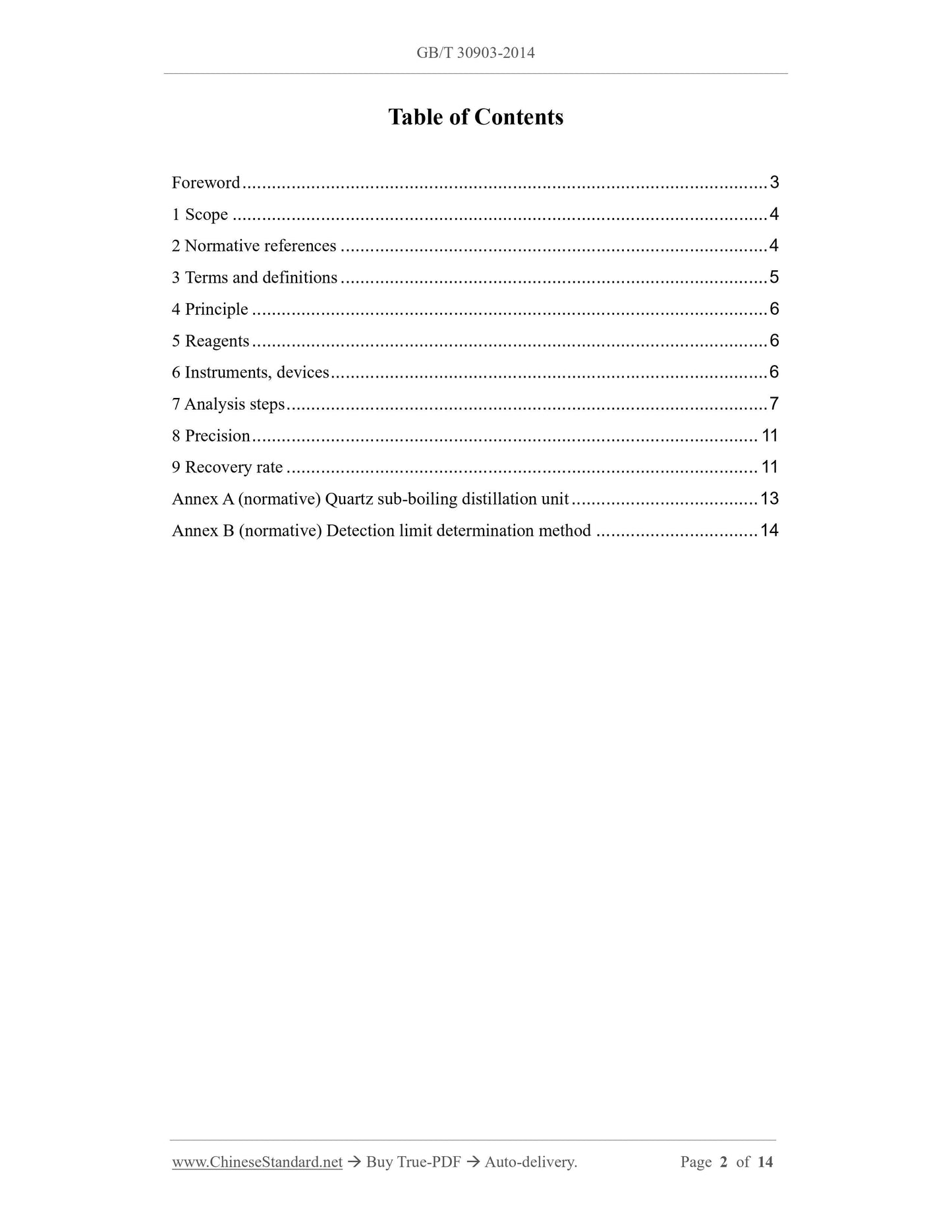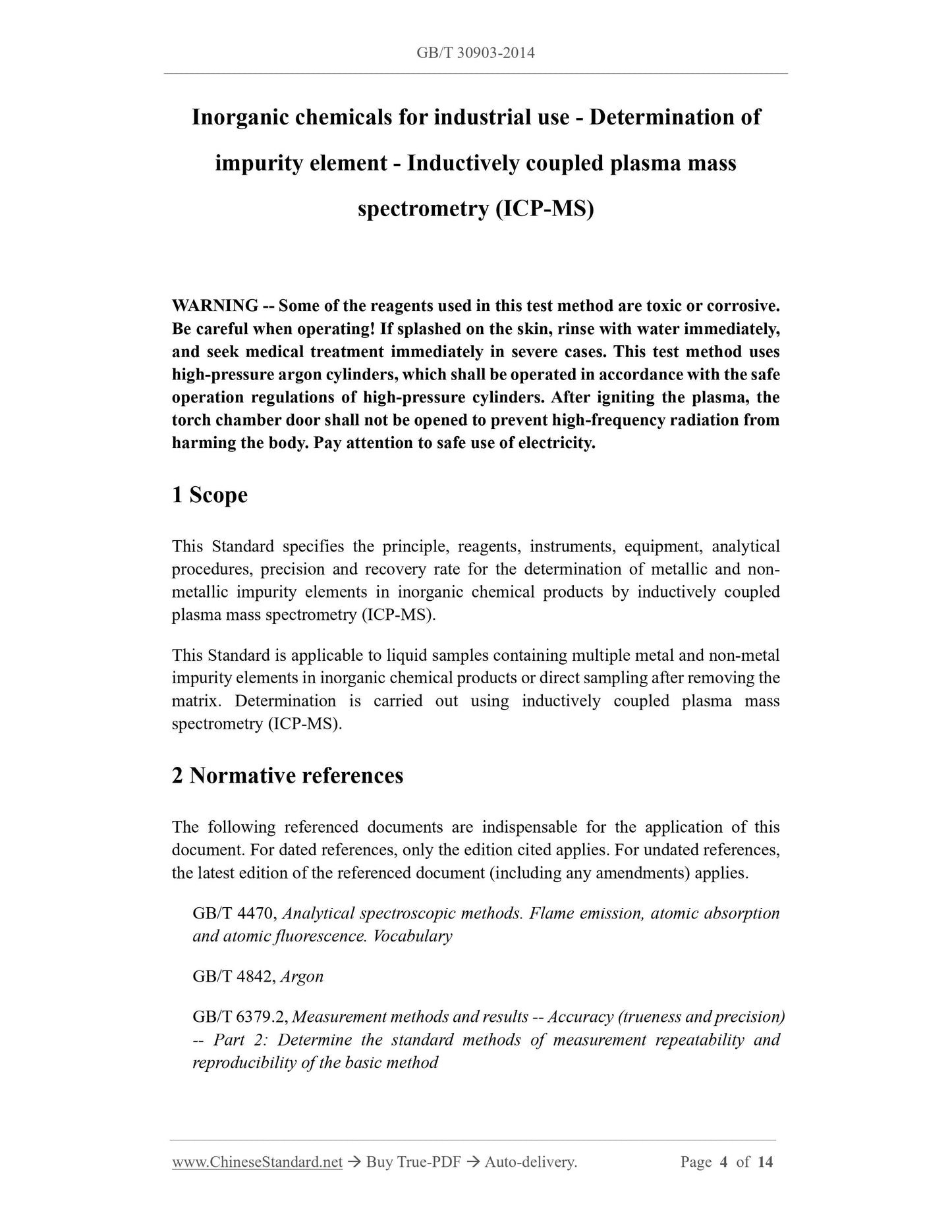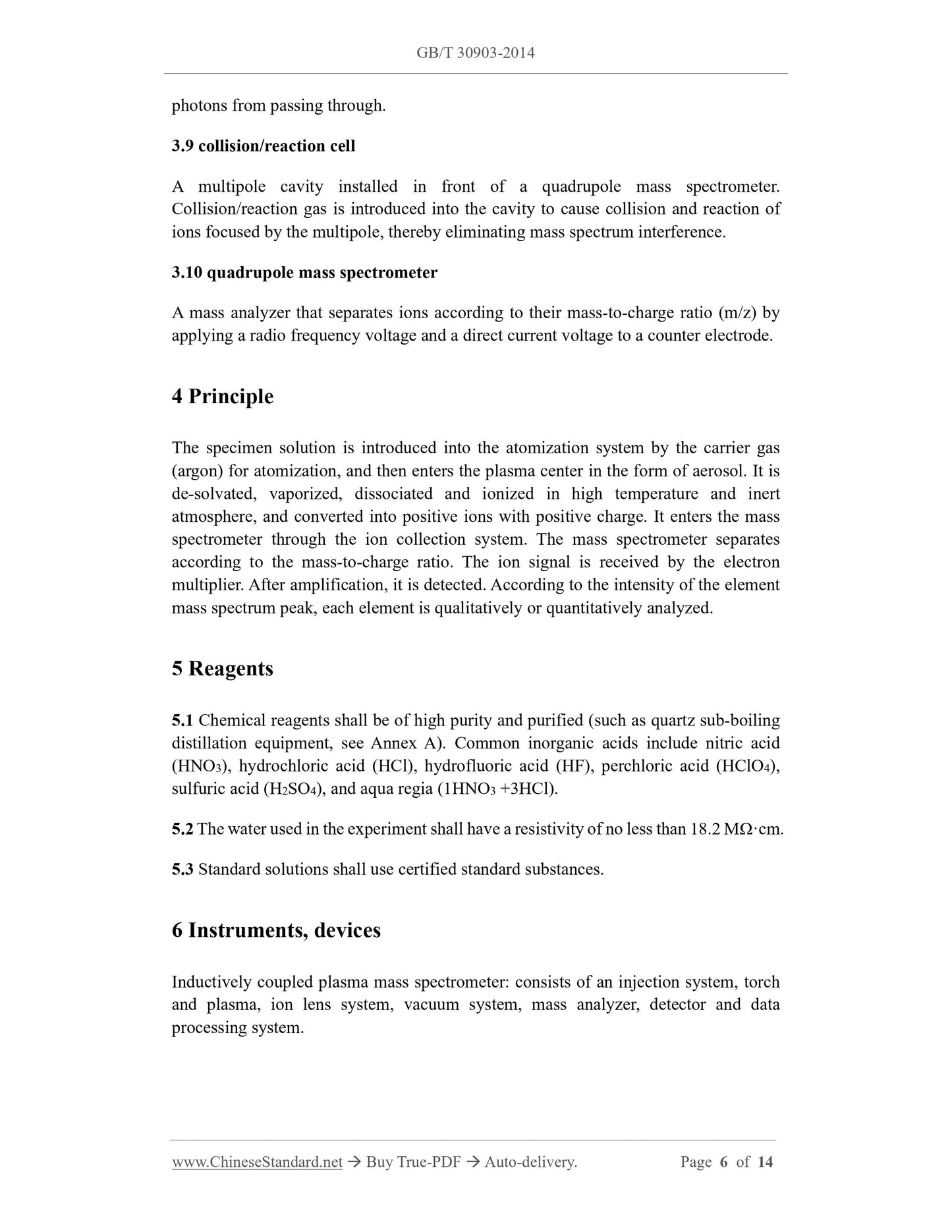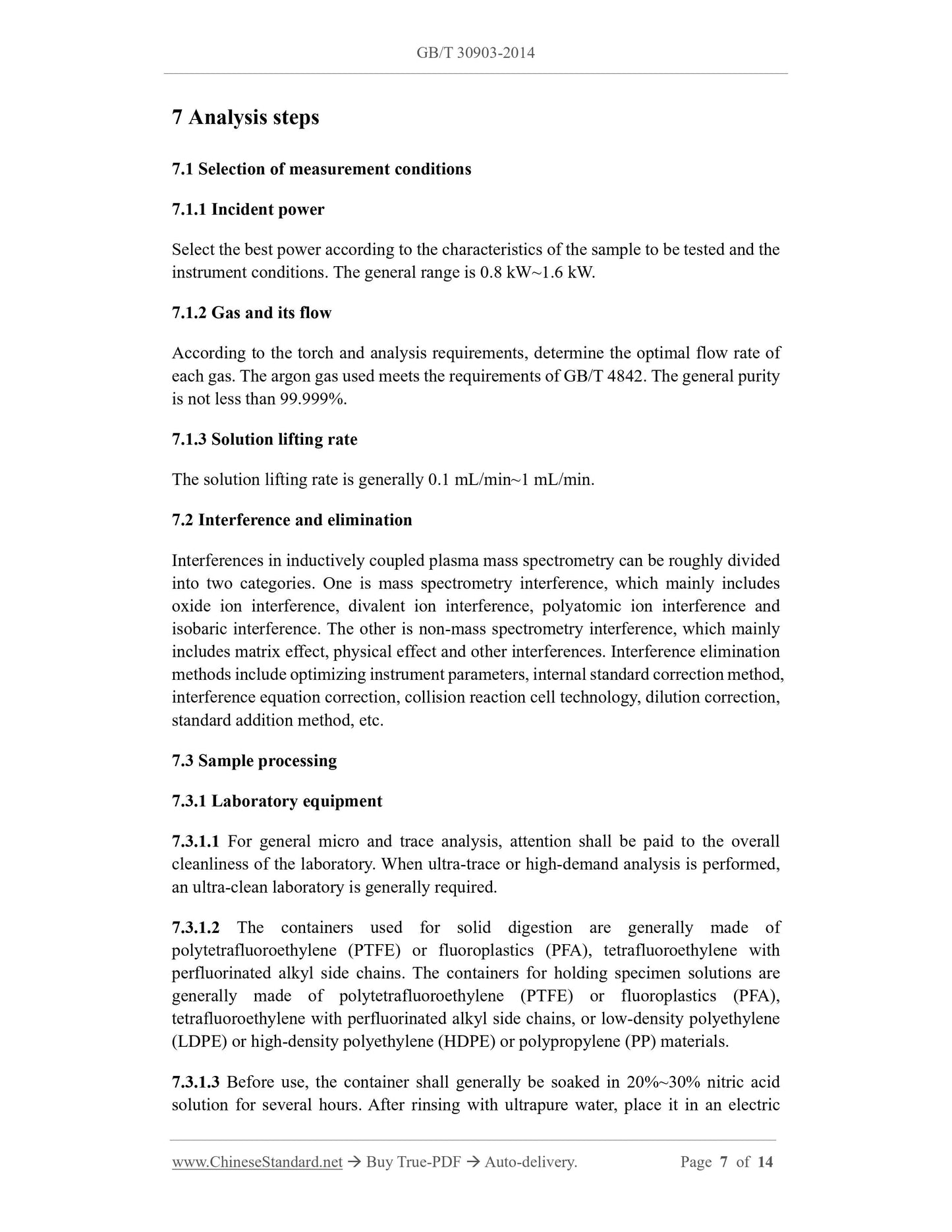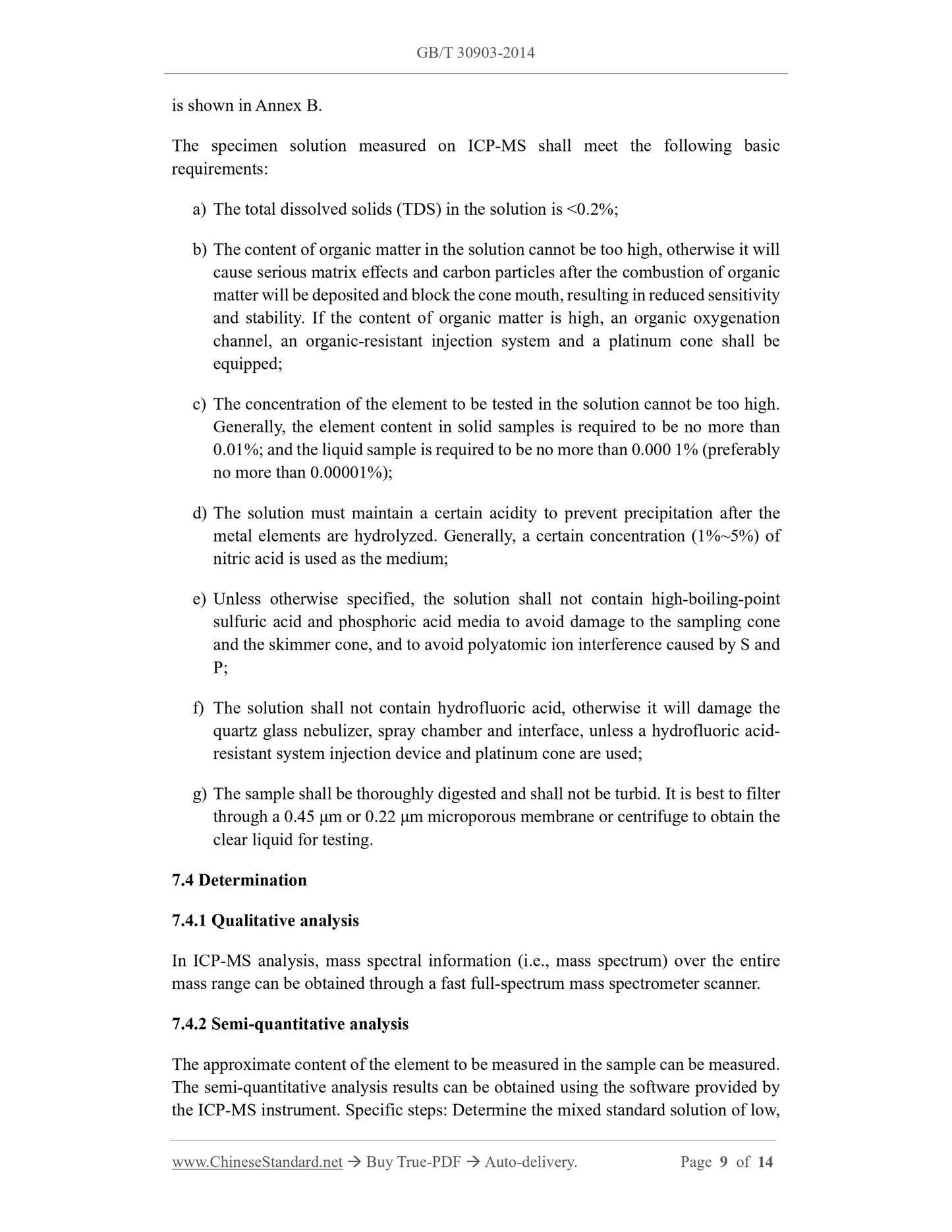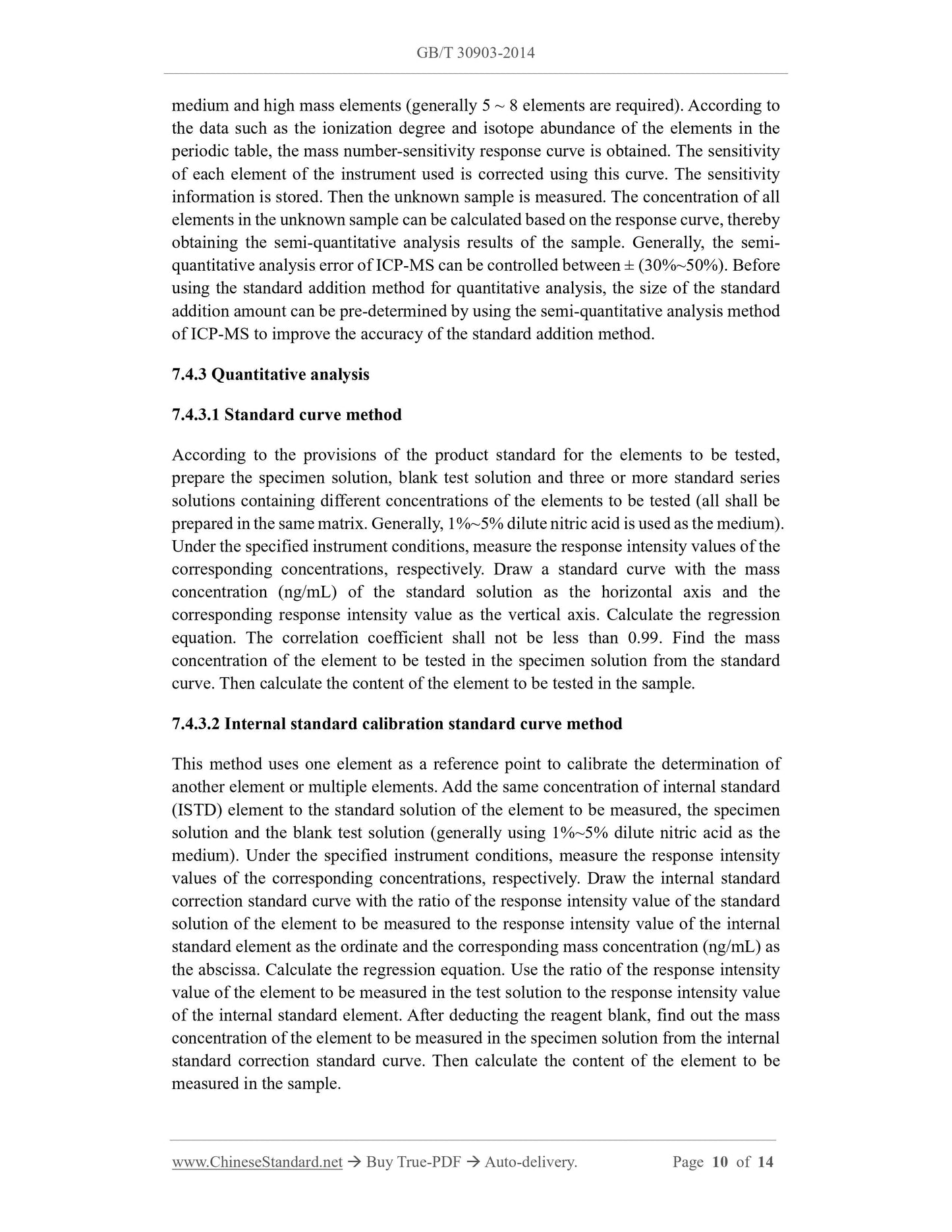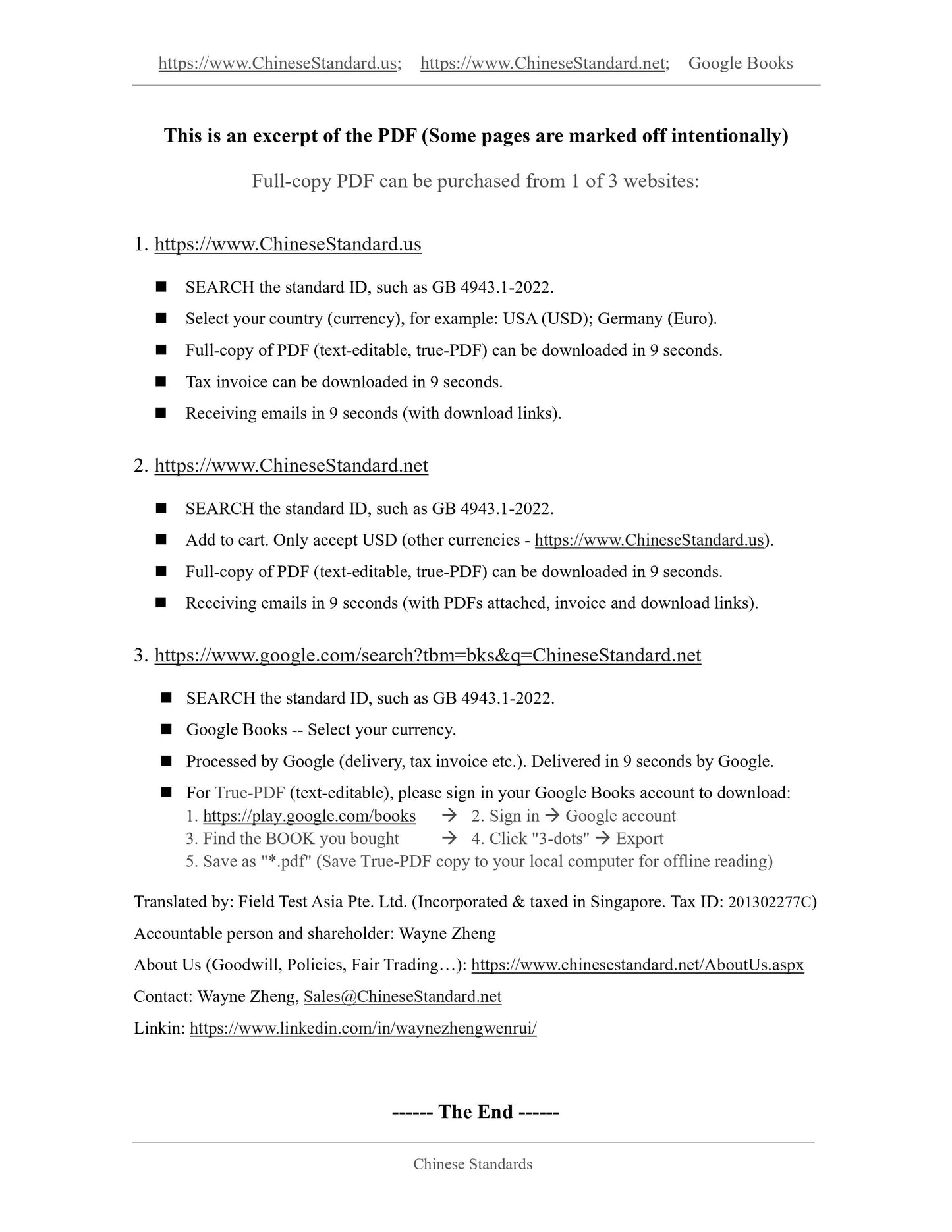1
/
of
8
www.ChineseStandard.us -- Field Test Asia Pte. Ltd.
GB/T 30903-2014 English PDF (GB/T30903-2014)
GB/T 30903-2014 English PDF (GB/T30903-2014)
Regular price
$170.00
Regular price
Sale price
$170.00
Unit price
/
per
Shipping calculated at checkout.
Couldn't load pickup availability
GB/T 30903-2014: Inorganic chemicals for industrial use - Determination of impurity element - Inductively coupled plasma mass spectrometry (ICP-MS)
Delivery: 9 seconds. Download (and Email) true-PDF + Invoice.Get Quotation: Click GB/T 30903-2014 (Self-service in 1-minute)
Newer / historical versions: GB/T 30903-2014
Preview True-PDF
Scope
This Standard specifies the principle, reagents, instruments, equipment, analyticalprocedures, precision and recovery rate for the determination of metallic and non-
metallic impurity elements in inorganic chemical products by inductively coupled
plasma mass spectrometry (ICP-MS).
This Standard is applicable to liquid samples containing multiple metal and non-metal
impurity elements in inorganic chemical products or direct sampling after removing the
matrix. Determination is carried out using inductively coupled plasma mass
spectrometry (ICP-MS).
Basic Data
| Standard ID | GB/T 30903-2014 (GB/T30903-2014) |
| Description (Translated English) | Inorganic chemicals for industrial use - Determination of impurity element - Inductively coupled plasma mass spectrometry (ICP-MS) |
| Sector / Industry | National Standard (Recommended) |
| Classification of Chinese Standard | G10 |
| Classification of International Standard | 71.060.01 |
| Word Count Estimation | 11,157 |
| Date of Issue | 7/8/2014 |
| Date of Implementation | 12/1/2014 |
| Quoted Standard | GB/T 4470; GB/T 4842; GB/T 6379.2 |
| Regulation (derived from) | 2014 National Standards Bulletin No. 18 |
| Issuing agency(ies) | General Administration of Quality Supervision, Inspection and Quarantine of the People's Republic of China, Standardization Administration of the People's Republic of China |
| Summary | This standard specifies the inductively coupled plasma mass spectrometry (ICP-MS) measurement principle inorganic chemical products and non-metallic impurity elements, reagents, instruments, equipment, analytical step, precision, recovery. This standard a |
Share
